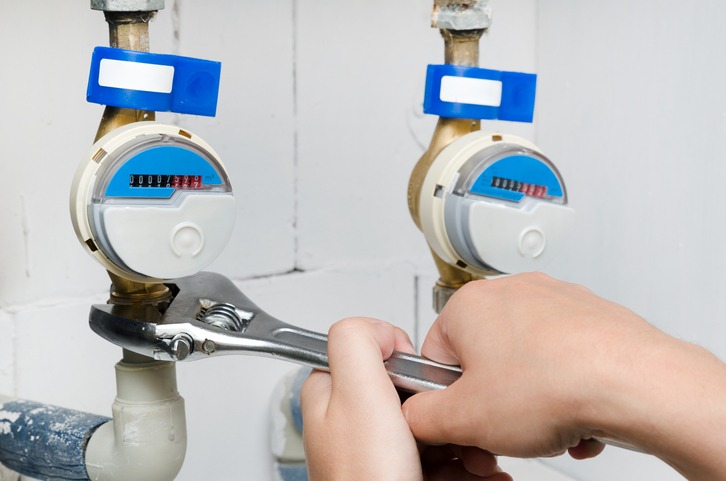Plumbing is a vital aspect of any building’s infrastructure, ensuring the proper flow of water and the safe disposal of waste. To maintain safety, efficiency, and functionality, plumbing systems must adhere to specific codes and regulations set by local authorities. Unfortunately, drain cleaning and plumbing code violations are all too common and can lead to various issues, including health hazards, water damage, and costly repairs.
Learn more about the most common plumbing code violations that homeowners, contractors, and property owners should be aware of. Understanding these violations will help you identify potential issues, ensure compliance with regulations, and maintain the integrity of your plumbing system.
Improper Venting
Proper venting is crucial for any plumbing system. It allows air to enter the pipes, facilitating smooth drainage and preventing the formation of siphons that can hinder water flow. One of the most common code violations is inadequate or improper venting, which can result in slow drains, gurgling sounds, and foul odours. These issues indicate a potential venting problem, such as undersized vents, blocked vents, or incorrect vent placement. Addressing venting violations promptly is essential to maintain a properly functioning plumbing system and prevent issues like sewer gas backup.
Incorrect Pipe Slope
Plumbing pipes should be installed with the correct slope to ensure adequate drainage. The pipes need to slope downward to allow wastewater to flow freely toward the sewer or septic system. The incorrect pipe slope is a frequent violation, often due to poor installation practices or improper planning. Insufficient slope can lead to slow draining, blockages, and backups. It’s crucial to adhere to code requirements regarding pipe slope to prevent these problems and maintain the proper functioning of your plumbing system.
Inadequate Backflow Prevention
Backflow occurs when the flow of water in a plumbing system is reversed, potentially causing contamination of the water supply. To prevent backflow, plumbing codes require the installation of backflow prevention devices, such as check valves or backflow preventers. Failure to install these devices or maintain them improperly is a significant code violation. It poses a risk of cross-connection contamination, jeopardizing the quality and safety of the water supply. Regular inspection and maintenance of backflow prevention devices are essential to ensure compliance with plumbing codes and protect public health.
Improper Pipe Materials
Plumbing codes specify the types of materials that can be used for various applications in a plumbing system. Using incorrect or substandard pipe materials is a common violation that can have serious consequences. For example, using unsuitable materials for underground pipes can lead to corrosion, leaks, and structural damage. Similarly, using non-approved materials for potable water lines can contaminate the water supply. It is essential to follow plumbing code requirements regarding pipe materials to ensure the longevity, safety, and efficiency of your plumbing system.
Insufficient Fixture Clearances
Proper clearance around plumbing fixtures, such as toilets, sinks, and showers, is crucial for accessibility, functionality, and hygiene. Plumbing codes specify the minimum clearances required to ensure comfortable use and ease of maintenance. Common violations include fixtures placed too close together, inadequate space in front of fixtures, or insufficient headroom in showers. These violations can lead to discomfort, difficulties in cleaning and maintenance, and violations of accessibility standards. Following code requirements for fixture clearances promotes convenience, hygiene, and compliance with building regulations.
Improper Installation of Water Heaters
Water heater installations require careful attention to plumbing code requirements to ensure safety and efficiency. Violations related to water heater installations include improper venting, incorrect pipe sizing, inadequate clearances from combustible materials, and faulty pressure relief valve installation. These violations can lead to carbon monoxide buildup, scalding hazards, leaks, and even explosions. Adhering to plumbing codes when installing or replacing water heaters is crucial to safeguard the occupants of the building and prevent catastrophic accidents.
Lack of Proper Permits and Inspections
Obtaining the necessary permits and scheduling inspections is a critical step in ensuring compliance with plumbing codes. Many plumbing code violations stem from failing to acquire the required permits or neglecting to schedule inspections during construction or renovation projects. Skipping these crucial steps can result in substandard workmanship, hidden issues, and potential hazards. Engaging with the local authorities, obtaining permits, and scheduling inspections are essential to ensure that your plumbing work meets the required standards and follows local regulations.
Conclusion
Plumbing code violations can lead to significant issues, ranging from inconveniences like slow drains that require drain cleaning to serious health hazards and expensive repairs. Understanding the most common plumbing code violations empowers homeowners, contractors, and property owners to identify potential issues, rectify violations promptly, and maintain a safe and efficient plumbing system. By ensuring proper venting, correct pipe slope, adequate backflow prevention, suitable pipe materials, sufficient fixture clearances, proper water heater installations, and obtaining the necessary permits and inspections, you can uphold plumbing codes, promote safety, and preserve the integrity of your plumbing infrastructure. Remember, compliance with plumbing codes is not just a legal requirement but also a crucial step in protecting your property, your health, and the well-being of everyone who utilizes the plumbing system.
